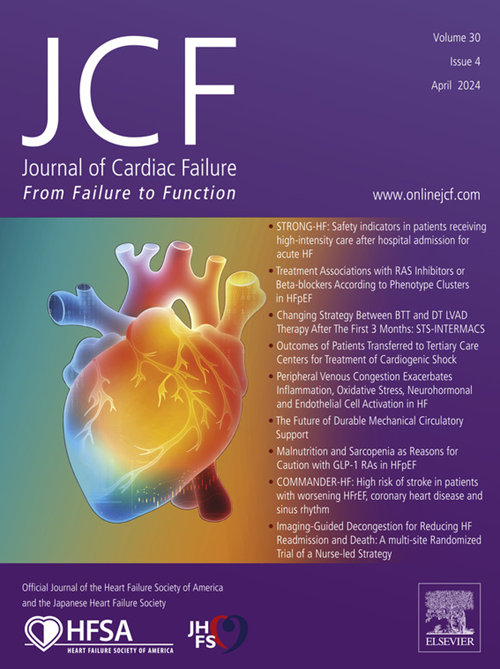雷帕霉素抑制剂在心脏结节病中的作用机制。
IF 6.7
2区 医学
Q1 CARDIAC & CARDIOVASCULAR SYSTEMS
引用次数: 0
摘要
背景:心脏结节病是一种罕见但具有潜在破坏性的结节病,是一种多系统炎性肉芽肿性疾病。尽管皮质类固醇是主要的治疗方法,但考虑到长期使用皮质类固醇会导致并发症的数量,人们对使用类固醇保留剂的兴趣越来越大。最近的基础和转化研究表明,雷帕霉素(mTOR)途径的机制靶点在心脏结节病中的作用。方法:我们确定了在雪松-西奈心脏结节病诊所治疗的4例活动性心脏结节病患者和皮质类固醇强化的禁忌症。我们试图通过心脏18f -氟脱氧葡萄糖(FDG)正电子发射断层扫描(PET)成像来评估雷帕霉素(mTOR)抑制剂的机制靶点在心脏炎症变化中的作用。结果:在4名患者中,2名患者在接受mTOR抑制剂治疗6个月后,没有皮质类固醇强化治疗,随访FDG-PET成像显示心脏炎症有明显改善。心脏代谢活动减少了80%以上。另外两名接受mTOR抑制剂治疗的患者在随访的FDG-PET中有持续的心脏炎症证据,需要增加治疗方案。讨论:该病例系列代表了mTOR抑制剂在心脏结节病中的首次临床应用,并提示这些药物可能在心脏结节病的治疗中发挥作用。本文章由计算机程序翻译,如有差异,请以英文原文为准。
Utility of Mechanistic Target of Rapamycin Inhibitors in Cardiac Sarcoidosis
Background
Cardiac sarcoidosis is an uncommon but potentially devastating manifestation of sarcoidosis, which is a multisystem inflammatory granulomatous disease. Although corticosteroids are the mainstay of treatment, given the number of complications associated with their long-term use, there is increasing interest in the use of steroid-sparing agents. Recent basic and translational studies have suggested a role for the mechanistic target of rapamycin (mTOR) pathway in cardiac sarcoidosis.
Methods
We identified 4 patients treated at the Cedars-Sinai Cardiac Sarcoidosis Clinic who had active cardiac sarcoidosis and contraindications to corticosteroid intensification. We sought to evaluate the role of mechanistic target of mTOR inhibitors on the change in cardiac inflammation via cardiac 18 F-fluorodeoxyglucose (FDG) positron emission tomography (PET) imaging.
Results
Of the 4 patients, 2 showed substantial improvement in cardiac inflammation on follow-up FDG-PET imaging after 6 months of treatment with an mTOR inhibitor but without corticosteroid intensification. There was a greater than 80% reduction in the cardiometabolic activity. The other 2 patients treated with an mTOR inhibitor had persistent evidence of cardiac inflammation on follow-up FDG-PET, necessitating an augmented treatment regimen.
Discussion
This case series represents the first clinical use of mTOR inhibitors for cardiac sarcoidosis, and it suggests that these agents may have a role in the management of cardiac sarcoidosis.
求助全文
通过发布文献求助,成功后即可免费获取论文全文。
去求助
来源期刊

Journal of Cardiac Failure
医学-心血管系统
CiteScore
7.80
自引率
8.30%
发文量
653
审稿时长
21 days
期刊介绍:
Journal of Cardiac Failure publishes original, peer-reviewed communications of scientific excellence and review articles on clinical research, basic human studies, animal studies, and bench research with potential clinical applications to heart failure - pathogenesis, etiology, epidemiology, pathophysiological mechanisms, assessment, prevention, and treatment.
 求助内容:
求助内容: 应助结果提醒方式:
应助结果提醒方式:


